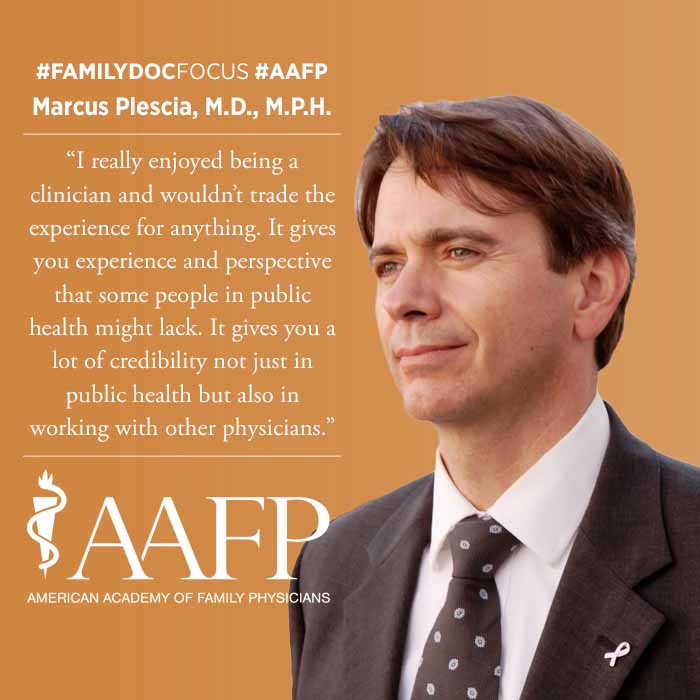FP Playing Key Role in States' Pandemic Response
March 30, 2020 04:02 pm David Mitchell – As a family physician and county health director, Marcus Plescia, M.D., M.P.H., monitored travelers returning from areas where the Ebola virus is endemic, performed contact tracing for a patient with measles, dealt with outbreaks of hepatitis A and foodborne illnesses, and even investigated a death caused by a "brain-eating amoeba."

None of that fully prepared him for the COVID-19 pandemic.
"Every health department deals with GI outbreaks from restaurants and things like that a lot," he said. "This is completely different because it's new."
Plescia has been the chief medical officer for the Washington, D.C.-based Association of State and Territorial Health Officials since 2017, providing medical leadership and expertise to the organization's board of directors, staff and members. During more typical times, he oversees the organization's chronic disease prevention and control programs, directs ASTHO's satellite office in Atlanta, acts as its primary liaison to the CDC, and serves as a medical expert for the media.
Those latter two roles have consumed much of Plescia's time in recent weeks as ASTHO's members -- the top medical officers for all 50 states, U.S. territories and Washington, D.C. -- grapple with the pandemic.
"It's been crazy," said Plescia, who has been quoted by The Washington Post, The New York Times, NBC, National Public Radio, Fox News and others recently. "I'm the only clinician on the ASTHO staff, and our members are so busy. I've been doing a lot of media."
He's also been having daily online meetings with the CDC, which allows ASTHO to inform its members about what the federal agency is doing about the pandemic, as well as to provide feedback.
"We want to provide guidance that's useful and easy to implement," Plescia said. "It makes a difference when there is that ability to have a back and forth."
For example, the CDC initially offered guidance to limit mass gatherings without defining a specific number of people. The agency updated that guidance to specify fewer than 50 people after ASTHO and others pushed back.
Plescia's relationship with the CDC goes back more than two decades. From 2009 to 2014, he directed the agency's Division of Cancer Prevention and Control. From 1998 to 2003, while he was assistant director of a family medicine residency in Charlotte, N.C., he also developed and led a CDC Racial and Ethnic Approaches to Community Health (REACH 2010) grant, a $7 million community demonstration project to ameliorate cardiovascular disease disparities in an African-American community.
During that time, Plescia also provided primary care to medically underserved patients in hospital, health department and primary care settings. Ultimately, he moved on to serve as chief of the Chronic Disease and Injury Section of the North Carolina Division of Public Health for six years.
"It came to a point where it was challenging to balance clinical work in a rigorous academic setting with the public health work," he said. "I made a transition and focused on the public health side of my career."
Plescia, who also had spent two years as medical director of a New York clinic that served a homeless population right after residency, said his past practice experience has been invaluable in his more recent roles.
"I really enjoyed being a clinician and wouldn't trade the experience for anything," he said. "It gives you experience and perspective that some people in public health might lack. It gives you a lot of credibility not just in public health but also in working with other physicians."
So what advice, from a public health perspective, would Plescia offer his family physician peers as they deal with COVID-19 in their communities?
"They deserve an enormous amount of credit from a public health context," he said, "not only for diagnosing, identifying and treating the ill but also for encouraging people to stay home and being clear -- maybe even stern -- with that message. We have to limit exposure to other people. That's the only way we're going to get this under control."